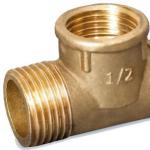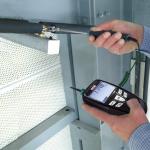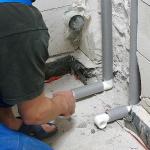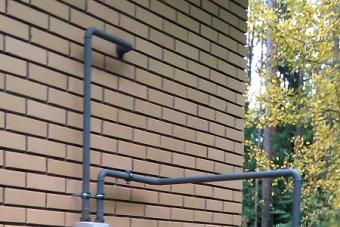For the most part, owners of private houses prefer to install gas equipment.
The reason for everything is the price - gas is the most inexpensive type of fuel. Of course, the gasification process itself is an expensive pleasure. But the savings in paying for heating will quickly cover the cost of installing gas equipment.
In the event that you have firmly decided to gasify your home, you need to know what you need for this: permits, what work is to be done, the price of this issue.
- They have increased resistance to the negative effects of various chemical compounds, as well as environmental factors.
- Their strength is combined with sufficient ductility, which makes it possible to lay a gas pipeline in settlements with a particularly harsh climate (at temperatures up to minus 45 ° C, such pipes retain impact strength).
- Because plastic does not conduct electricity, polyethylene pipes are insensitive to the action of stray currents, which means they have reliable protection against electrochemical damage. It is for this reason that such pipes do not require additional protection when laid in;
- The mass of polyethylene pipes is seven times less than steel pipes. What is important, they are delivered in special compact bays, which greatly simplifies transportation;
- It is easy and convenient to install these pipes
- The service life of polyethylene pipes exceeds that of steel pipes by two, and sometimes three times, and reaches 50 years or more.
Must be remembered! The introduction of pipes into the house and their separation in the house is carried out only with steel pipes.
Like all products, polyethylene pipes have certain limitations:
- In areas where the air temperature drops below 45 ° C, as well as in areas with seismicity exceeding 6 points, it is forbidden to use polyethylene pipes when laying a gas pipeline;
- The use of polyethylene pipes when laying a gas pipeline is prohibited both above and on the ground, in channels, tunnels and collectors, as well as in buildings;
- It is forbidden to lay a gas pipeline from such pipes in the area where it is planned to arrange crossings through artificial or natural barriers.
Types of boilers or how to make the right choice?
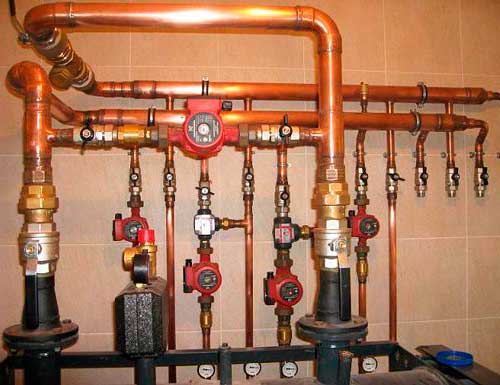 Heat exchangers in boilers are made of cast iron or steel. The cast-iron heat exchanger has a long service life (approximately 20 to 25 years, compared to steel from 10 to 15 years), which provides a high rate of corrosion resistance.
Heat exchangers in boilers are made of cast iron or steel. The cast-iron heat exchanger has a long service life (approximately 20 to 25 years, compared to steel from 10 to 15 years), which provides a high rate of corrosion resistance.
The cast iron heat exchanger usually consists of sections, this gives an advantage in case of an accident. Those. not the entire boiler is dismantled, only damaged areas are insulated. It must be remembered that such a boiler is characterized by high mechanical and thermal sensitivity. In this regard, it is possible to feed with cold water only if the heat exchanger has completely cooled down.
 Compared with the above boiler, the gas boiler with steel heat exchanger has advantages in terms of cost and is lighter in weight. A distinctive feature of a boiler with a steel heat exchanger is resistance to mechanical stress, but a negative feature is susceptibility to corrosion. The weight of a boiler with a cast iron heat exchanger is 114 kilograms, and the weight of the same boiler with a steel heat exchanger is approximately 60 kilograms.
Compared with the above boiler, the gas boiler with steel heat exchanger has advantages in terms of cost and is lighter in weight. A distinctive feature of a boiler with a steel heat exchanger is resistance to mechanical stress, but a negative feature is susceptibility to corrosion. The weight of a boiler with a cast iron heat exchanger is 114 kilograms, and the weight of the same boiler with a steel heat exchanger is approximately 60 kilograms.
Another type of boilers is non-volatile and volatile.
Boilers with energy independence are characterized by natural circulation, but at the same time they have an impressive list of disadvantages:
- the pipeline itself has a large diameter,
- there is an open expansion tank,
- a special installation of the system is required to ensure the desired slope,
- the largest - there is no way to adjust the air temperature in the house.
At the same time, the room in which it is planned to install a boiler with an open combustion chamber must be provided with a tide and exhaust, as well as a chimney.
 If we talk about volatile boilers, they are equipped with a closed expansion tank, circulation pumps and full electronic automatic boiler control. In this regard, they can undoubtedly be called a mini-boiler room.. But at the same time, one should take into account the important fact that ensuring the uninterrupted operation of the entire heating system depends on a stable mains voltage of 230 ± 10% in the presence of a voltage stabilizer.
If we talk about volatile boilers, they are equipped with a closed expansion tank, circulation pumps and full electronic automatic boiler control. In this regard, they can undoubtedly be called a mini-boiler room.. But at the same time, one should take into account the important fact that ensuring the uninterrupted operation of the entire heating system depends on a stable mains voltage of 230 ± 10% in the presence of a voltage stabilizer.
For boilers with a natural prerequisite for the smooth operation of heating gas equipment becomes a chimney. There are internal, passing through the ceiling and roof of the house itself, as well as external, which are mounted along the outer surface of the wall.
Only a specialist can choose the optimal chimney
 The consumer only needs to know a few simple rules:
The consumer only needs to know a few simple rules:
- the diameter of the boiler neck should not be larger than the inner diameter of the chimney;
- the minimum number of all kinds of bends and knees in the path of flue gases;
- when installing the chimney, it is necessary to ensure conditions that exclude the formation of condensate.
Chimneys made of stainless steel are optimal in terms of quality and price.
They can be single layer or double layer. Single-layer are used for laying a chimney indoors. Their significant drawback is the formation of abundant condensate, which is formed when modern gas heating facilities are used to remove flue gases.
Double-layer chimneys, made of two layers of steel, the space between which is filled, such a device reduces the amount of condensate that forms.
It must be remembered that the choice of a chimney depends on the power of the boiler, the temperature of the outlet of the combustion products, the material of the shaft and its insulation, as well as other factors affecting such indicators as traction, safety, durability and reliability.
When we have decided on the equipment, we proceed to the development of the project
 Either employees of Gorgaz or design engineers of any specialized organization deal with this issue..
Either employees of Gorgaz or design engineers of any specialized organization deal with this issue..
The development of the project includes drawing up a scheme for laying pipes to the house, determining the place where the line enters the house.
The cost of the procedure depends on the length that will be used to connect your home to the gas pipeline.
With autonomous gasification, which is carried out using a gas tank, the project determines the installation location of such.
 Choosing a site for the installation of a gas tank, you need to take into account the following requirements: it is located no closer than 2 meters from the fence of the site and no closer than 5 meters from the building itself.
Choosing a site for the installation of a gas tank, you need to take into account the following requirements: it is located no closer than 2 meters from the fence of the site and no closer than 5 meters from the building itself.
